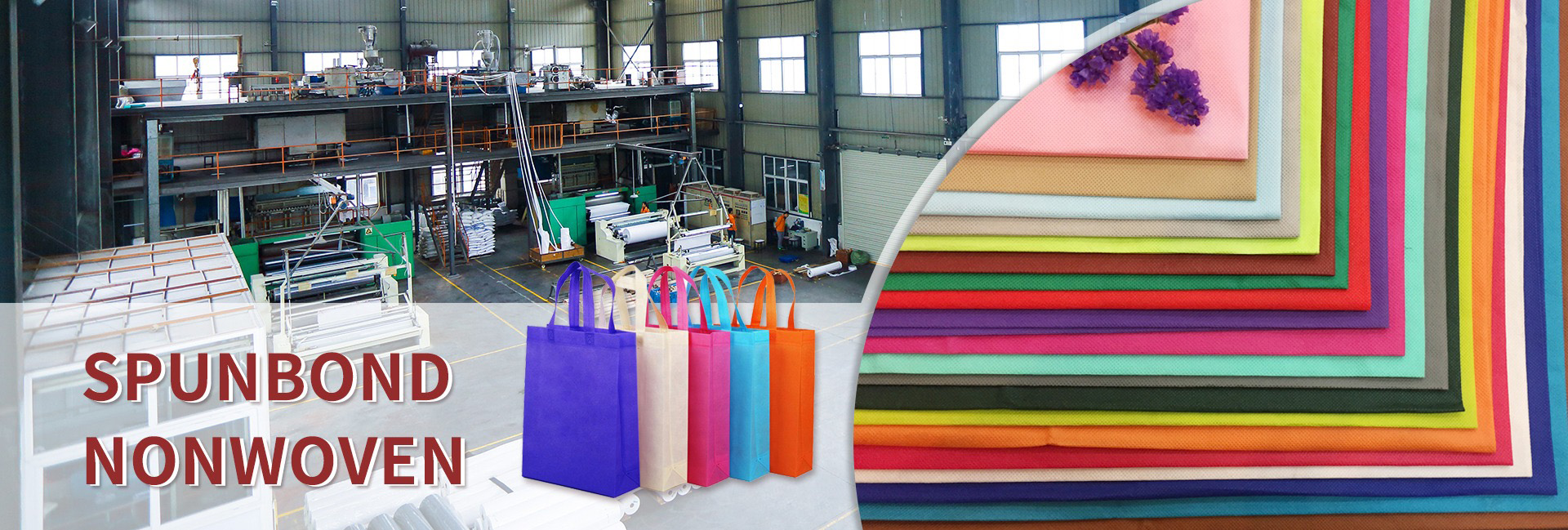In the field of non-woven fabrics, polyester spunbond non-woven fabric and polypropylene spunbond non-woven fabric are two widely used materials, and their permeability has certain differences, which are closely related to their respective material characteristics, fiber structures, etc.
Essential differences
From the perspective of the material itself, polyester is a polyester fiber with ester bonds in its molecular structure and a certain degree of polarity; And polypropylene is a polypropylene fiber, belonging to non-polar molecules. This polarity difference results in different interactions between them and water. Generally speaking, polar molecules are more likely to attract water molecules, which to some extent affects the permeability of materials.
Core difference
There are significant differences in water permeability between polyester spunbond nonwoven fabric and polypropylene spunbond nonwoven fabric, and the core differences are as follows:
Comparison of permeability
Drainage and core suction effect
Polypropylene fibers have stronger core absorption and drainage capabilities due to their lower density (0.91) and finer fineness. When the fibers become thinner, capillary action is enhanced, and liquid water can quickly diffuse and be discharged along the fiber gaps.
Polyester fiber has a high density (1.38) and relatively weak drainage, making it more suitable for scenarios that rely on surface water repellency.
Breathability performance
Polypropylene provides better breathability due to its porous structure, especially in the application of fine denier fibers (single filament denier<2), which can efficiently discharge gaseous sweat and improve comfort.
Polyester has strong initial water repellency (surface water droplets directly slide off), but its long-term breathability is slightly inferior to polypropylene
Influence of material structure
Polypropylene non-woven fabric often adopts a three-dimensional mesh design to directly enhance the liquid penetration channel. Polyester relies on the hot rolling bonding of polyester chips to form a tighter surface structure, resulting in higher initial water permeability resistance
Differences in applicable scenarios
In practical applications, this difference in permeability makes them suitable for different scenarios. Polypropylene spunbond nonwoven fabrics, due to its good water permeability, is often used in fields such as agricultural irrigation, soil and water conservation, and the diversion layer of disposable sanitary products that require good water permeability.
Preferred scenario for polypropylene
Lightweight fabrics such as sportswear and swimsuits that require quick sweating;
Waterproof layer for damp environments such as bathrooms and basements (relying on core suction and drainage);
Agricultural greenhouse covering materials (need to balance breathability and anti-seepage).
Applicable scenarios for polyester
Polyester spunbond nonwoven fabric, due to its relatively low water permeability, stronger corrosion resistance, wear resistance, and strength, is more commonly used in scenarios that require certain waterproof or barrier properties, such as packaging materials and base fabrics for building waterproofing membranes.
Heat transfer printing, high-temperature filter material (temperature resistance of 290 ℃);
Short term waterproofing projects or budget limited projects (with costs lower than polypropylene);
Industrial anti-corrosion coating (strong acid and alkali resistance)
Precautions
However, it should be noted that the water permeability of non-woven fabrics is not absolute and is also affected by production process parameters. For example, by adjusting the stretching ratio and cooling conditions during the spunbond process, the morphology and arrangement of fibers can be changed, which in turn affects the pore structure of the material and ultimately regulates its permeability.
Summarize
In summary, polypropylene has outstanding advantages in active water permeability (core suction and drainage, breathable and sweat wicking), especially suitable for dynamic moisture management scenarios; Polyester focuses on passive water resistance (surface water repellent, high temperature protection), which is more suitable for static or short-term waterproof needs. When selecting, the most suitable material should be chosen based on specific application requirements, taking into account permeability and other properties such as strength, weather resistance, etc.
Dongguan Liansheng Non woven Technology Co., Ltd. was established in May 2020. It is a large-scale non-woven fabric production enterprise integrating research and development, production, and sales. It can produce various colors of PP spunbond non-woven fabrics with a width of less than 3.2 meters from 9 grams to 300 grams.
Post time: Aug-12-2025

